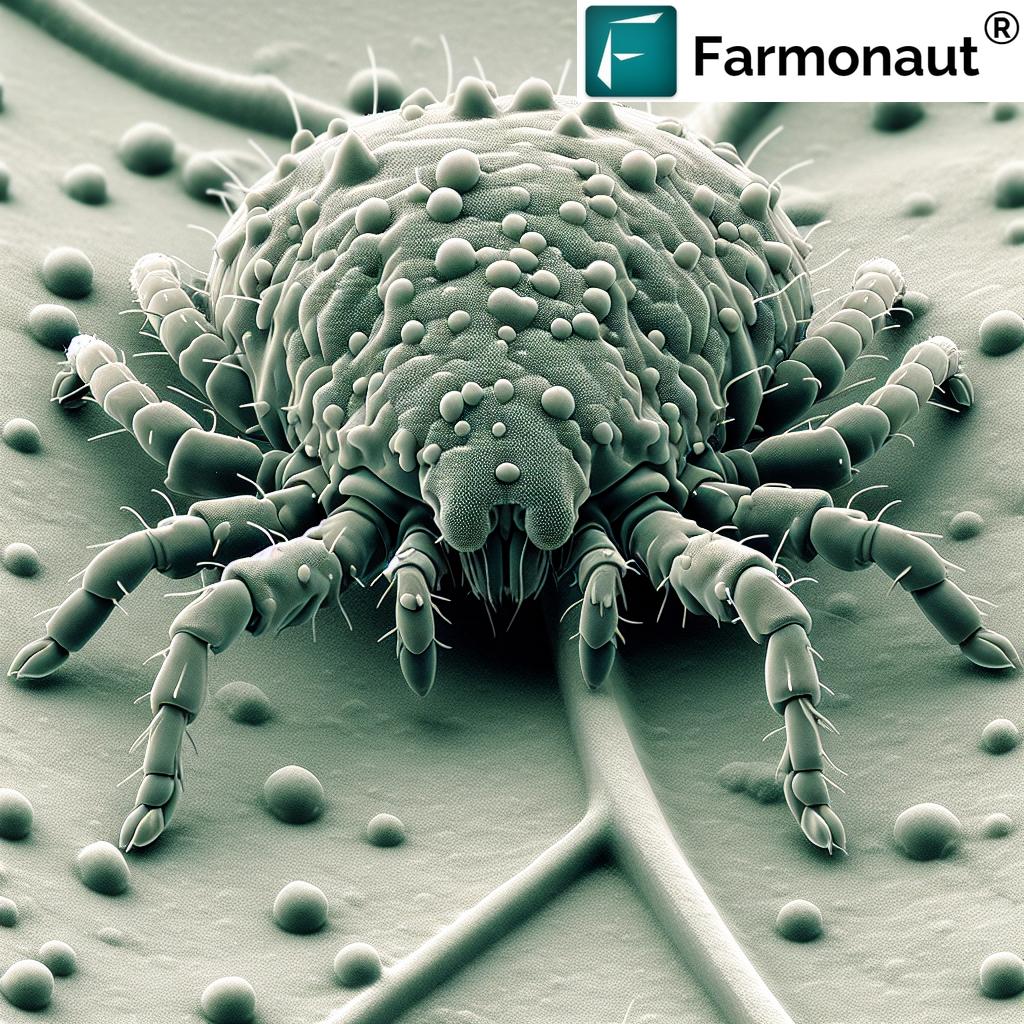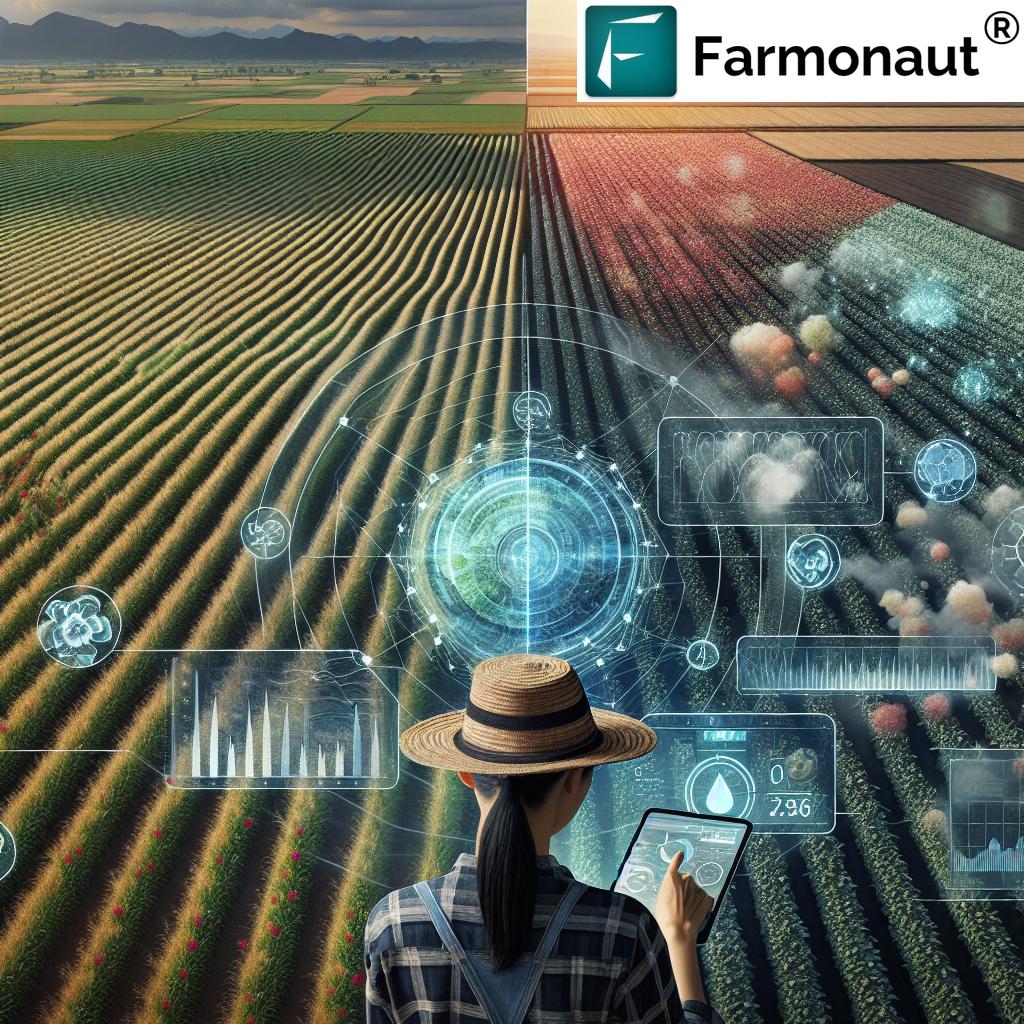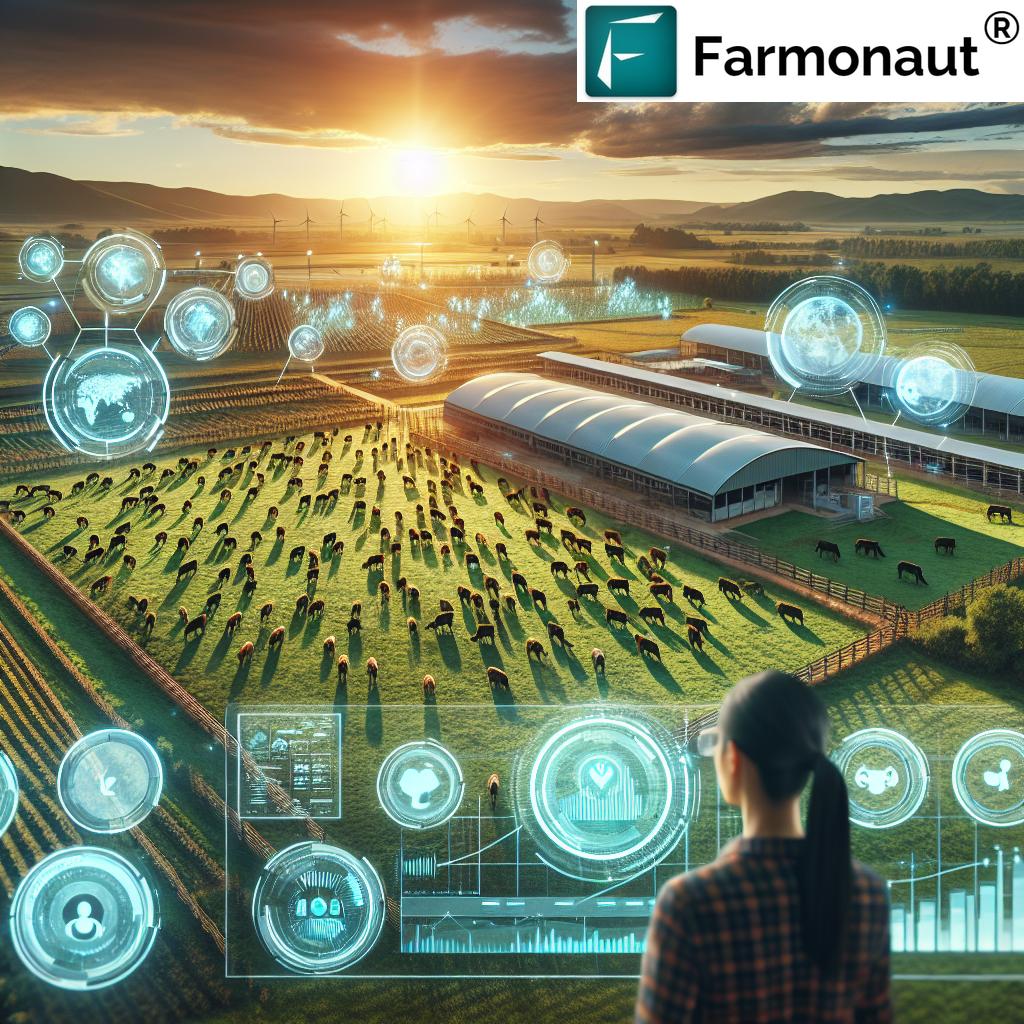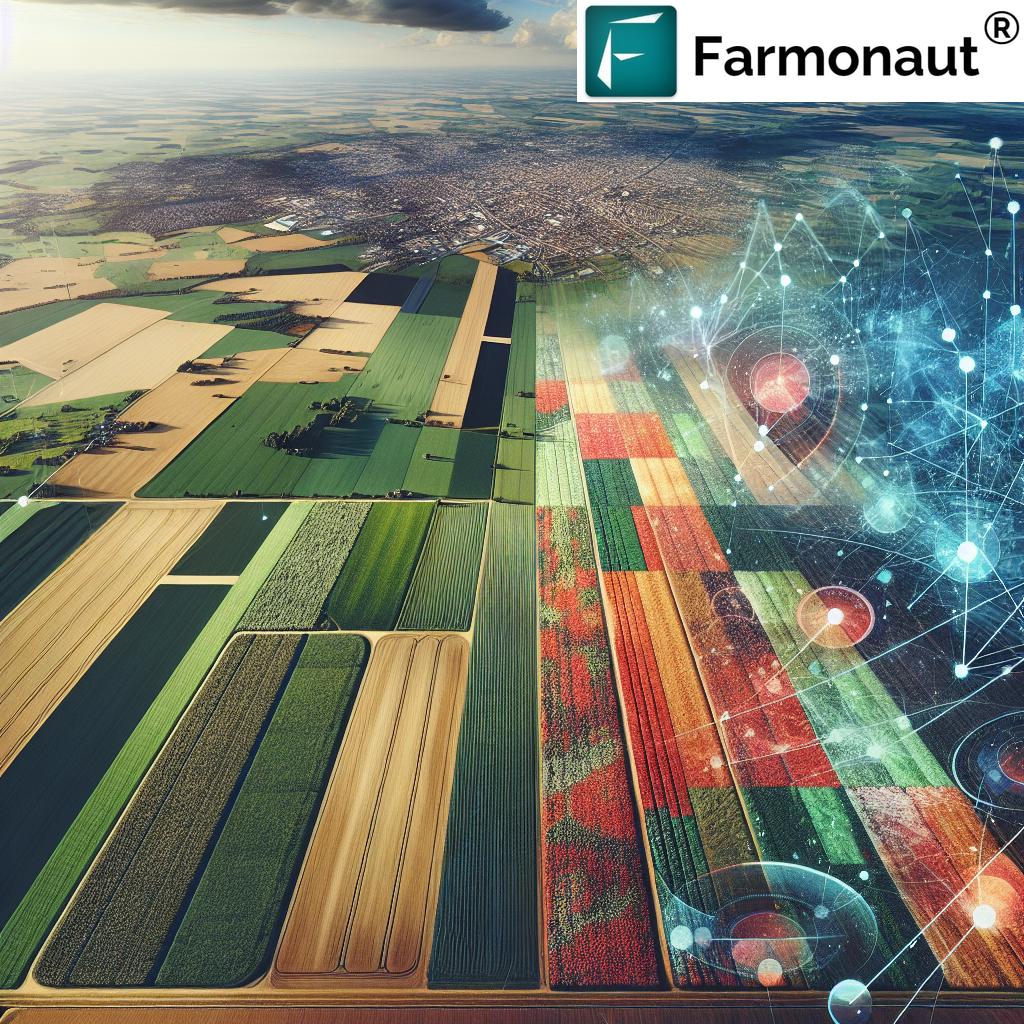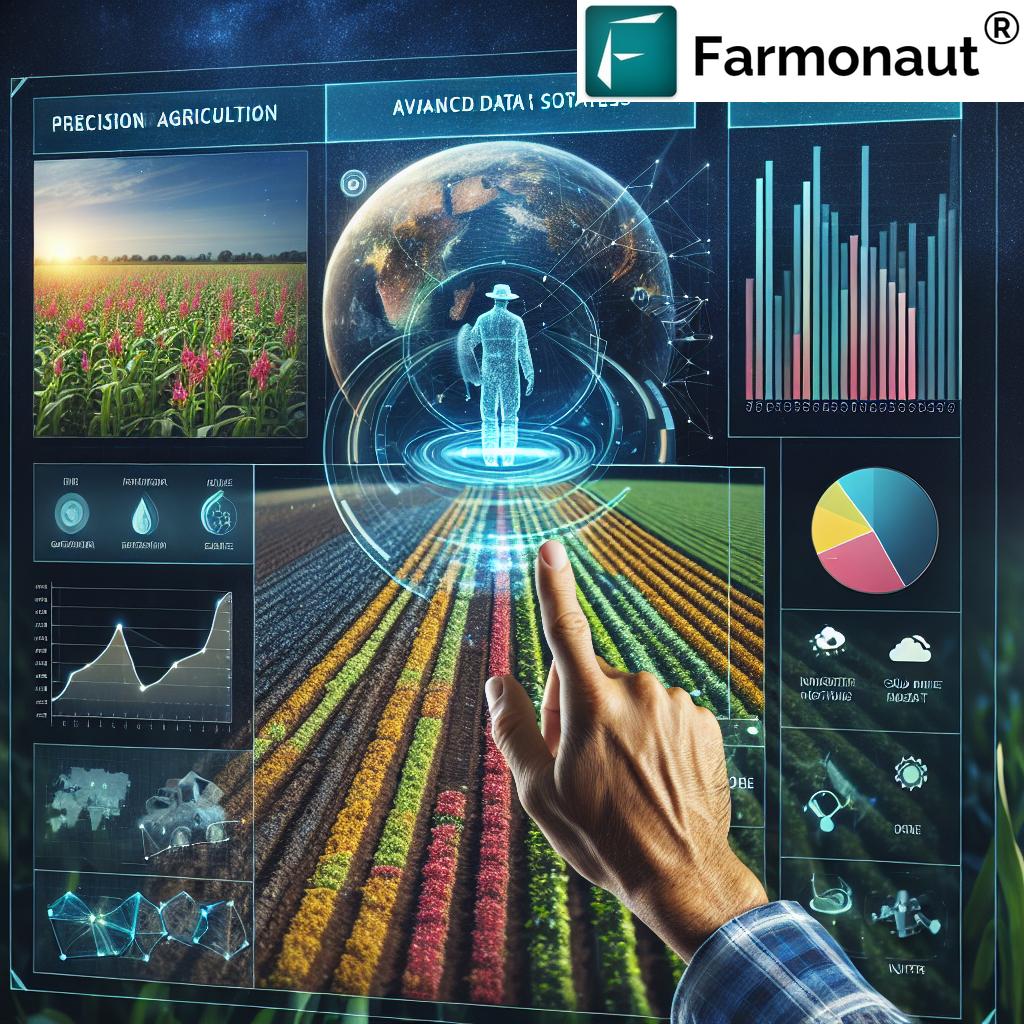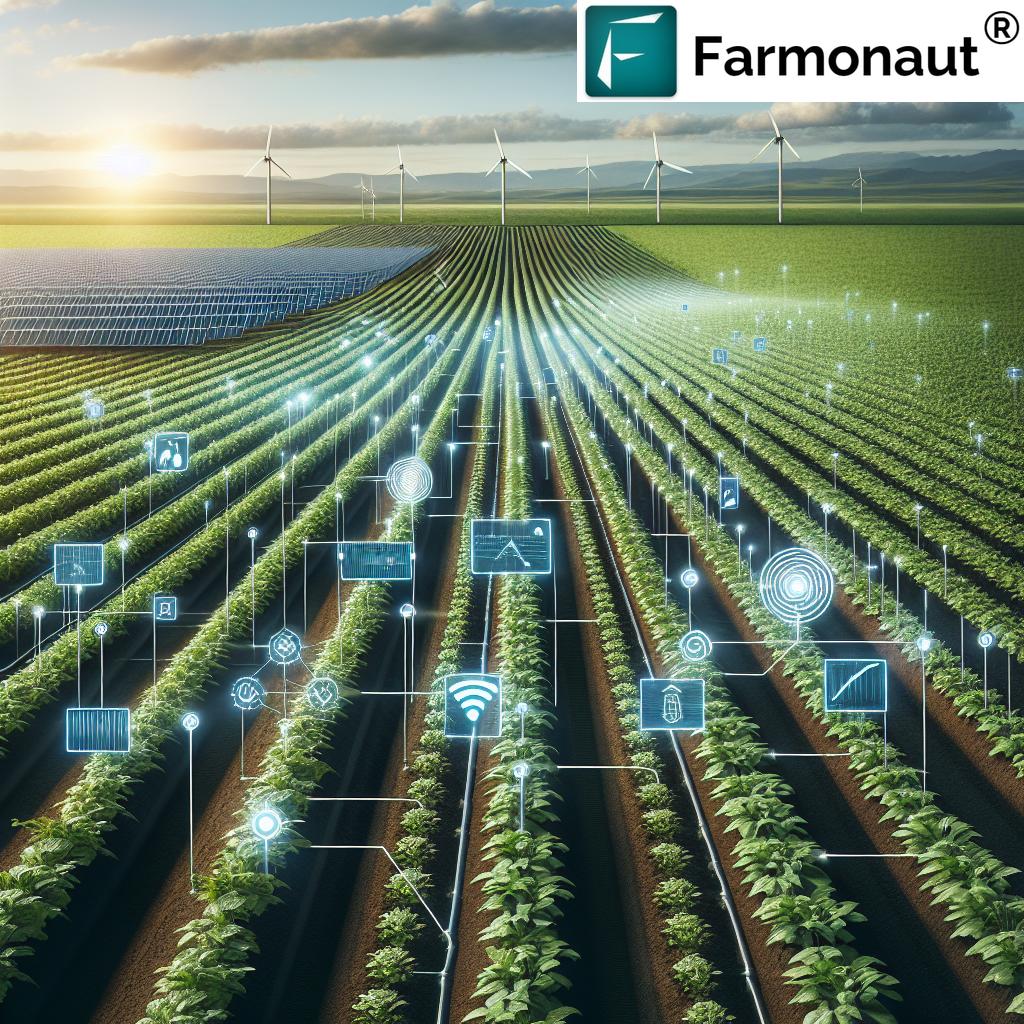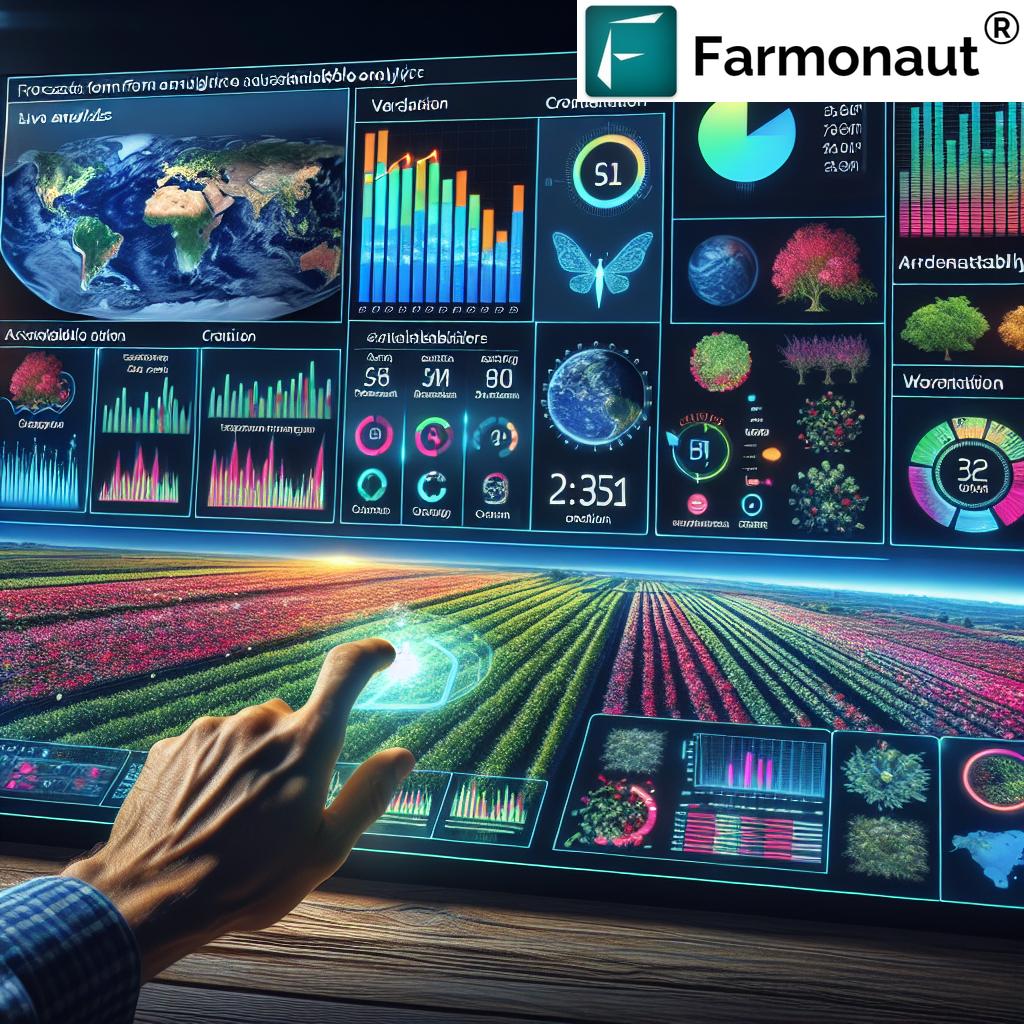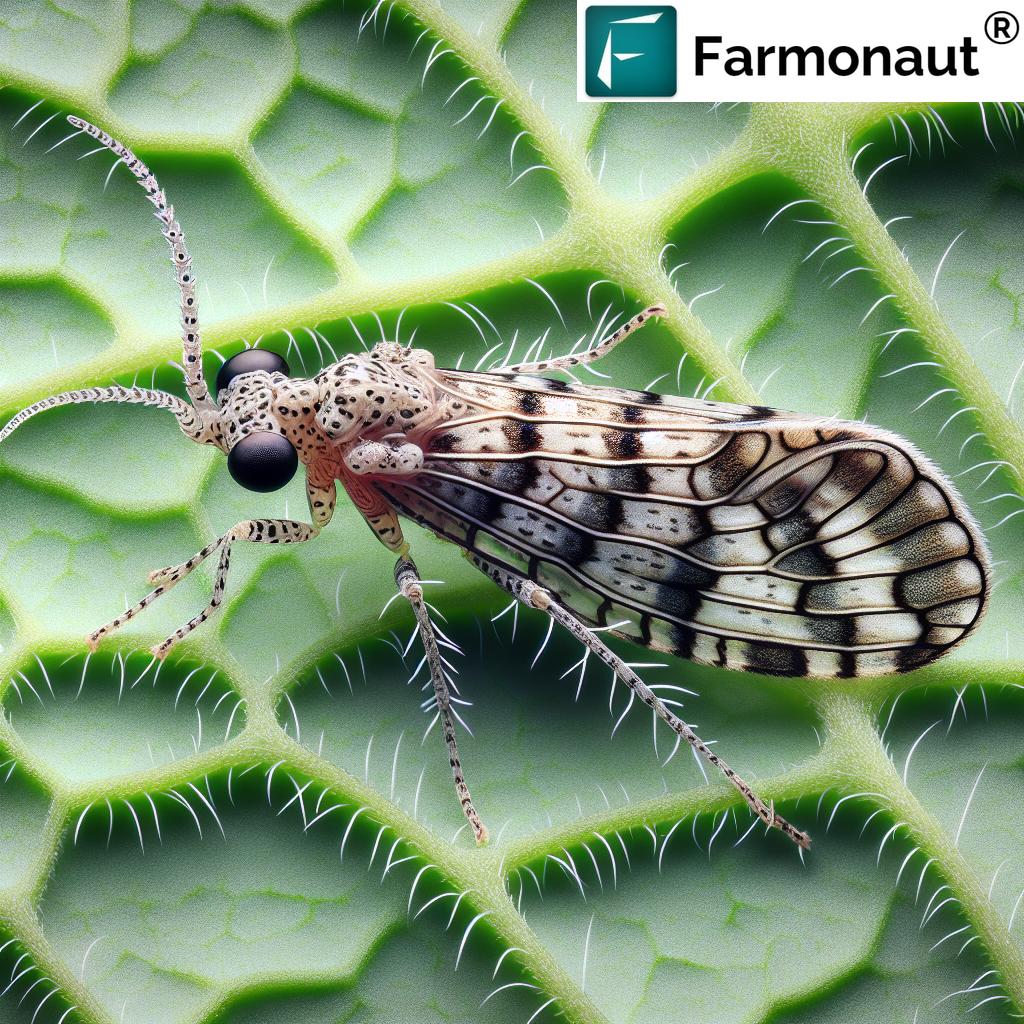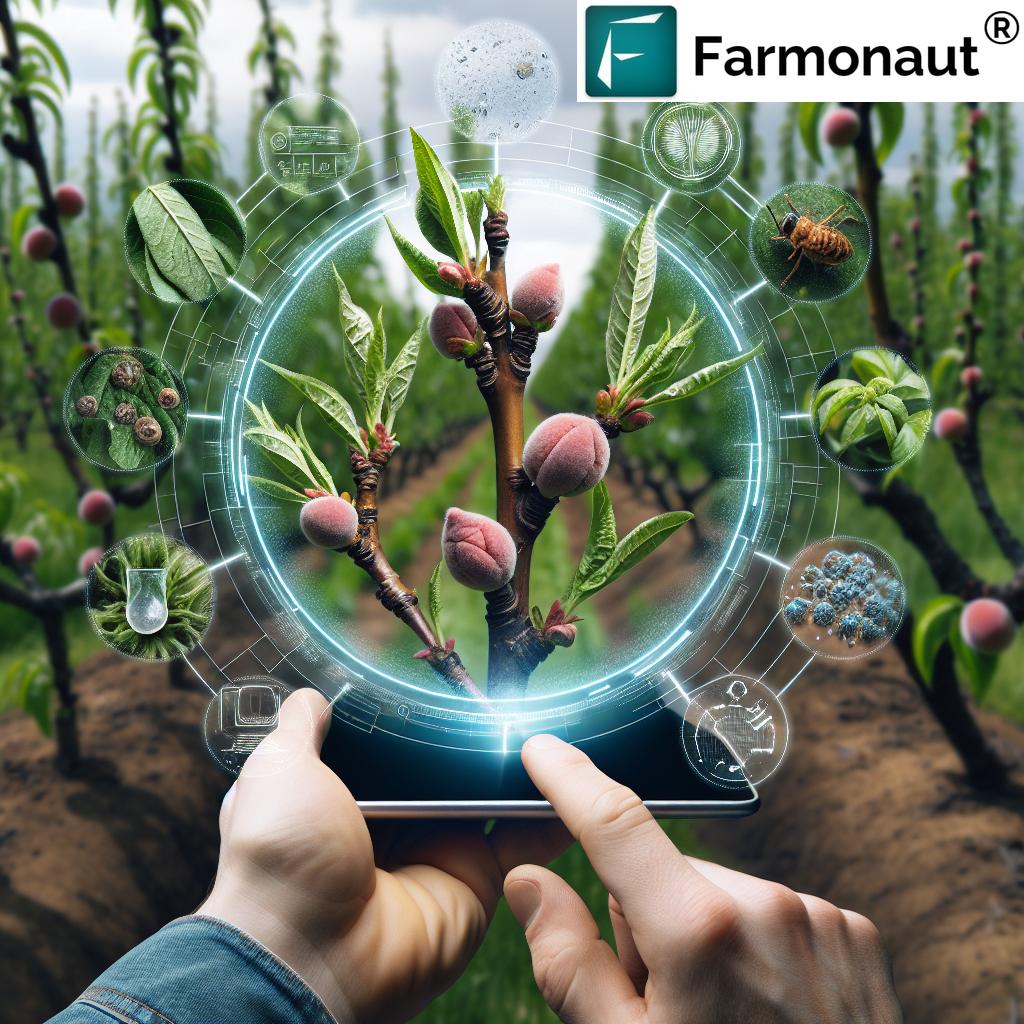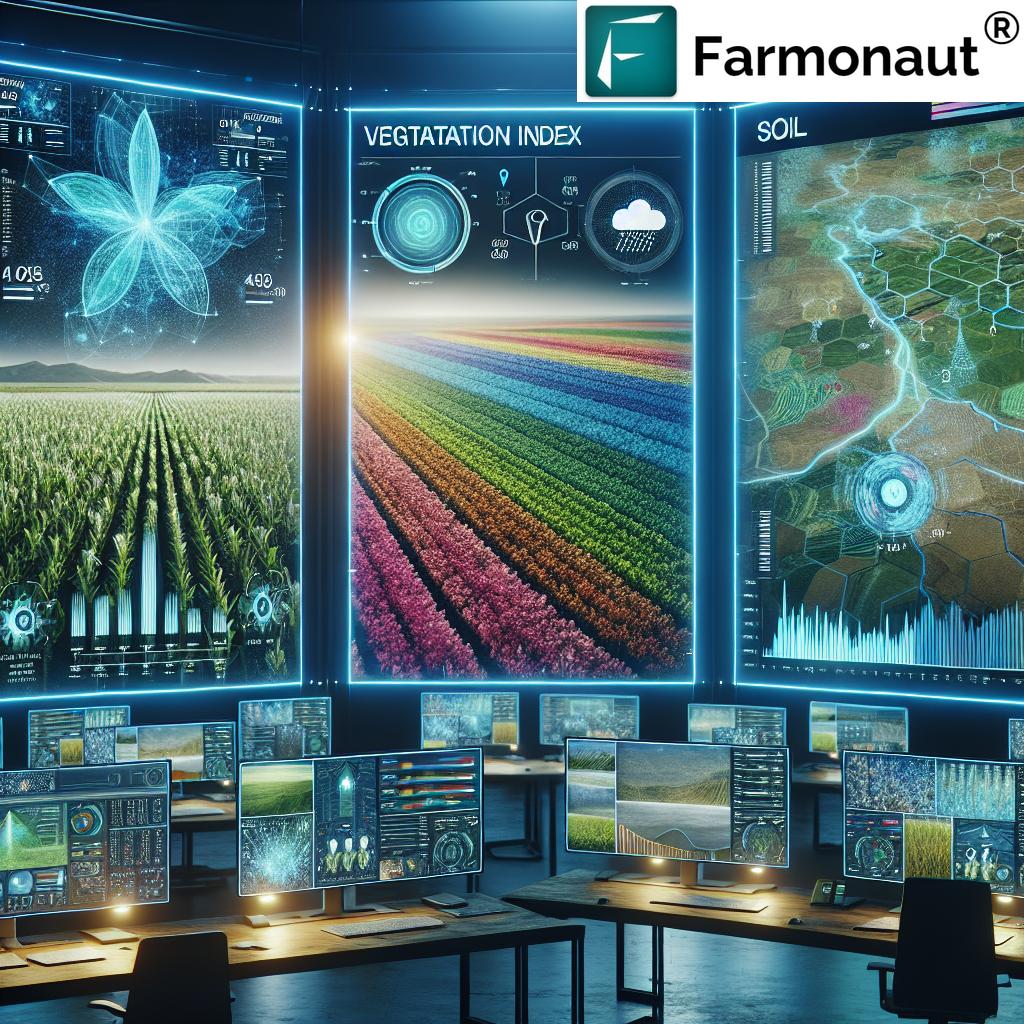
Revolutionizing Agriculture: The Power of Precision Farming and GIS
In today’s rapidly evolving agricultural landscape, we’re witnessing a remarkable transformation that’s reshaping the way we grow food and manage our farms. At the heart of this revolution lies the powerful combination of precision agriculture and Geographic Information Systems (GIS). These innovative technologies are not just changing farming; they’re redefining it, making it smarter, more efficient, and incredibly sustainable.
As we delve into this exciting world of agricultural innovation, we’ll explore how precision farming techniques, coupled with advanced GIS capabilities, are empowering farmers to make data-driven decisions, optimize resource use, and boost crop yields like never before. From satellite imagery to IoT sensors, from drone surveys to AI-powered analytics, we’re uncovering the myriad ways technology is breathing new life into one of humanity’s oldest professions.
Join us on this journey as we unravel the intricacies of precision agriculture and GIS, and discover how companies like Farmonaut are at the forefront of this agricultural revolution, making these game-changing technologies accessible to farmers worldwide.
Understanding Precision Agriculture: The Future of Farming
Precision agriculture, also known as precision farming or smart farming, is a management concept that leverages information technology to ensure crops and soil receive exactly what they need for optimal health and productivity. This approach goes beyond traditional farming methods by incorporating detailed, site-specific information to manage crops precisely.
Key Components of Precision Agriculture
- Data Collection: Utilizing various technologies such as satellite imagery, drones, and IoT sensors to gather detailed information about field variations, crop health, and environmental conditions.
- Data Analysis: Employing advanced algorithms and artificial intelligence to process and interpret the collected data, providing actionable insights for farm management.
- Precision Application: Implementing variable-rate technology for precise application of inputs like water, fertilizers, and pesticides based on the specific needs of different areas within a field.
- Monitoring and Adjustment: Continuous monitoring of crop performance and environmental conditions, allowing for real-time adjustments to management strategies.
By integrating these components, precision agriculture enables farmers to make informed decisions that optimize resource use, minimize environmental impact, and maximize crop yields. This data-driven approach is transforming agriculture from an art into a science, where every decision is backed by concrete, real-time information.
The Role of GIS in Precision Agriculture
Geographic Information Systems (GIS) play a crucial role in precision agriculture by providing the spatial context necessary for effective farm management. GIS technology allows farmers to visualize, analyze, and interpret data to understand patterns and relationships in their fields.
Key applications of GIS in agriculture include:
- Field Mapping: Creating detailed maps of fields, including soil types, topography, and crop varieties.
- Yield Mapping: Analyzing and visualizing crop yield data to identify high and low-performing areas within fields.
- Variable Rate Application: Generating prescription maps for variable-rate application of inputs based on field variability.
- Crop Monitoring: Tracking crop health and growth patterns over time using multispectral imagery and vegetation indices.
- Resource Management: Optimizing irrigation systems and managing water resources more efficiently.
By integrating GIS with other precision agriculture technologies, farmers can gain a comprehensive understanding of their fields and make data-driven decisions that lead to more sustainable and profitable farming practices.
Remote Sensing: The Eyes in the Sky for Modern Agriculture
Remote sensing has emerged as a game-changing technology in the field of precision agriculture. By providing a bird’s-eye view of vast agricultural landscapes, remote sensing enables farmers and agronomists to monitor crop health, detect issues early, and make informed decisions on a scale that was previously unimaginable.
Satellite Imagery: A Global Perspective on Agriculture
Satellite imagery has revolutionized the way we monitor and manage agricultural lands. With the ability to capture large areas regularly, satellites provide valuable insights into crop health, soil moisture, and overall field conditions. Here’s how satellite imagery is transforming agriculture:
- Crop Health Monitoring: Using multispectral imagery, farmers can assess crop health through vegetation indices like NDVI (Normalized Difference Vegetation Index). This allows for early detection of stress factors such as pest infestations, diseases, or nutrient deficiencies.
- Yield Prediction: By analyzing historical satellite data alongside current imagery, sophisticated algorithms can predict crop yields with increasing accuracy, helping farmers and markets prepare for the upcoming harvest.
- Soil Moisture Analysis: Certain satellites can penetrate the soil surface, providing valuable data on soil moisture levels. This information is crucial for optimizing irrigation schedules and preventing water stress in crops.
- Land Use Classification: Satellite imagery helps in mapping and classifying different land uses, aiding in agricultural planning and policy-making at regional and national levels.
Companies like Farmonaut are making satellite-based crop monitoring accessible to farmers of all scales. By leveraging advanced satellite technology, Farmonaut provides real-time insights into crop health, enabling farmers to make data-driven decisions that optimize yields and reduce resource waste.
Drones: The New Frontier in Precision Agriculture
While satellites offer a broad perspective, drones provide a more detailed, on-demand view of agricultural lands. These unmanned aerial vehicles (UAVs) are becoming increasingly popular in precision agriculture due to their flexibility and high-resolution imaging capabilities.
Key applications of drones in agriculture include:
- High-Resolution Crop Mapping: Drones can capture extremely detailed images of crops, allowing farmers to spot issues that might be missed by satellite imagery or ground-level inspections.
- Plant Counting and Stand Assessment: Using AI-powered image analysis, drones can accurately count plants and assess crop emergence, providing valuable data for yield estimation and replanting decisions.
- Precision Spraying: Some advanced agricultural drones are equipped with spraying systems, allowing for targeted application of pesticides or fertilizers, reducing waste and environmental impact.
- 3D Terrain Mapping: Drones can create detailed 3D maps of agricultural lands, helping in drainage planning, erosion control, and precision planting.
The integration of drone technology with other precision agriculture tools, such as Farmonaut’s satellite-based system, creates a powerful synergy. While satellites provide frequent, broad-scale monitoring, drones can be deployed for detailed inspections of specific areas of interest identified by satellite imagery.
IoT and Sensor Technology: The Pulse of Modern Farms
The Internet of Things (IoT) and sensor technology are bringing unprecedented levels of connectivity and real-time data collection to agriculture. These technologies are transforming farms into smart, connected ecosystems where every aspect of crop growth and environmental conditions can be monitored and optimized.
Soil Sensors: Understanding the Foundation of Agriculture
Soil health is fundamental to successful farming, and IoT-enabled soil sensors are providing farmers with deep insights into this critical resource. These sensors can measure various parameters including:
- Moisture Content: Real-time monitoring of soil moisture helps in optimizing irrigation, preventing water stress or over-watering.
- Nutrient Levels: Sensors can measure levels of crucial nutrients like nitrogen, phosphorus, and potassium, enabling precise fertilizer application.
- pH Levels: Continuous monitoring of soil pH allows farmers to maintain optimal conditions for crop growth and nutrient uptake.
- Temperature: Soil temperature data aids in determining the best times for planting and predicting pest and disease outbreaks.
By integrating this data with platforms like Farmonaut, farmers can correlate soil conditions with satellite-observed crop health, creating a comprehensive picture of their field’s status.
Weather Stations: Micro-Climate Monitoring for Macro Results
On-farm weather stations have become invaluable tools in precision agriculture. These IoT-enabled devices provide hyper-local weather data that can significantly impact farm management decisions. Key benefits include:
- Accurate Forecasting: Local weather stations provide more accurate short-term forecasts than regional predictions, helping farmers plan activities like planting, spraying, and harvesting.
- Frost Warnings: Early warnings about potential frost conditions allow farmers to take preventive measures to protect sensitive crops.
- Disease Prediction: Weather data is crucial for predicting the onset of many crop diseases, allowing for timely preventive measures.
- Irrigation Scheduling: By combining weather data with soil moisture readings, farmers can optimize irrigation schedules, saving water and energy.
Farmonaut’s platform can integrate data from on-farm weather stations with its satellite imagery and AI analytics, providing a comprehensive tool for weather-informed decision-making in agriculture.
Crop Sensors: Real-Time Plant Health Monitoring
Advanced crop sensors are bringing precision agriculture down to the individual plant level. These sensors can be handheld devices or mounted on farm equipment to provide real-time data on crop health and development. Key applications include:
- Chlorophyll Content: Sensors can measure chlorophyll levels, indicating plant health and nitrogen status.
- Biomass Estimation: Optical sensors can estimate crop biomass, providing insights into growth rates and potential yields.
- Water Stress Detection: Infrared sensors can detect early signs of water stress in plants before visible symptoms appear.
- Nutrient Deficiency Identification: Spectral analysis can identify specific nutrient deficiencies, allowing for targeted fertilizer application.
The data from these sensors, when combined with Farmonaut’s satellite-based crop monitoring, creates a multi-layered approach to crop management, enabling farmers to make highly informed decisions at both macro and micro levels.
Data Analytics and AI: Turning Farm Data into Actionable Insights
The true power of precision agriculture lies not just in data collection, but in the ability to analyze and interpret this data to derive actionable insights. This is where advanced data analytics and artificial intelligence (AI) come into play, transforming raw data into valuable information that drives decision-making on the farm.
Big Data in Agriculture: Managing the Information Deluge
Modern farms generate enormous amounts of data from various sources – satellite imagery, drones, IoT sensors, weather stations, and more. Managing and making sense of this data deluge requires sophisticated big data analytics tools. Here’s how big data is revolutionizing agriculture:
- Pattern Recognition: By analyzing historical and real-time data, big data tools can identify patterns and trends that might be invisible to the human eye, such as subtle changes in crop health over time.
- Predictive Analytics: Using historical data and current conditions, predictive models can forecast crop yields, pest outbreaks, and optimal harvest times.
- Resource Optimization: Big data analytics help in optimizing resource use by analyzing factors like soil conditions, weather patterns, and crop requirements to determine the most efficient use of water, fertilizers, and other inputs.
- Market Intelligence: By analyzing market trends alongside production data, farmers can make informed decisions about crop selection and timing to maximize profitability.
Farmonaut’s platform leverages big data analytics to process vast amounts of satellite imagery and sensor data, providing farmers with clear, actionable insights derived from complex datasets.
Artificial Intelligence: The Brain of Smart Farming
Artificial Intelligence and Machine Learning are taking agricultural data analysis to new heights, enabling more accurate predictions and automated decision-making processes. Key applications of AI in agriculture include:
- Image Analysis: AI algorithms can analyze satellite and drone imagery to detect crop stress, count plants, and identify weeds or diseases with high accuracy.
- Yield Prediction: Machine learning models can predict crop yields by analyzing historical data, current crop conditions, and environmental factors.
- Pest and Disease Prediction: AI systems can forecast pest infestations and disease outbreaks by analyzing weather patterns, crop health data, and historical pest behavior.
- Automated Crop Management: AI-powered systems can generate automated recommendations for irrigation, fertilization, and pest control based on real-time data analysis.
Farmonaut’s AI-driven advisory system, Jeevn AI, exemplifies the power of artificial intelligence in agriculture. By analyzing satellite data and other inputs, Jeevn AI provides personalized, real-time advice to farmers, helping them make optimal decisions for their specific conditions.
Decision Support Systems: Empowering Farmers with Data-Driven Choices
Agricultural Decision Support Systems (DSS) are sophisticated tools that combine data analytics, AI, and expert knowledge to assist farmers in making informed decisions. These systems integrate various data sources to provide comprehensive recommendations. Key features of modern agricultural DSS include:
- Scenario Analysis: Farmers can explore the potential outcomes of different management decisions before implementing them in the field.
- Risk Assessment: DSS can evaluate the risks associated with different farming strategies, considering factors like weather forecasts and market conditions.
- Compliance Management: These systems can help farmers ensure their practices comply with environmental regulations and sustainability standards.
- Financial Planning: By integrating production data with market information, DSS can assist in financial planning and budgeting for farm operations.
Farmonaut’s platform serves as a comprehensive decision support system, integrating satellite data, weather information, and AI-driven insights to provide farmers with a powerful tool for informed decision-making.
Precision Irrigation: Optimizing Water Use in Agriculture
Water is one of the most critical and often scarce resources in agriculture. Precision irrigation systems are revolutionizing water management in farming, ensuring that crops receive exactly the amount of water they need, when they need it. This not only conserves water but also improves crop yields and quality.
Smart Irrigation Systems: Technology-Driven Water Management
Smart irrigation systems use a combination of sensors, weather data, and AI to optimize water application. Key components and benefits include:
- Soil Moisture Sensors: These sensors provide real-time data on soil moisture levels at various depths, enabling precise irrigation scheduling.
- Weather Integration: Smart systems incorporate local weather forecasts to adjust irrigation plans, avoiding unnecessary watering before predicted rainfall.
- Evapotranspiration Modeling: Advanced systems calculate crop water needs based on evapotranspiration rates, ensuring optimal water application.
- Remote Control and Monitoring: Farmers can monitor and control irrigation systems remotely through smartphone apps, allowing for quick adjustments based on changing conditions.
Farmonaut’s platform can integrate with smart irrigation systems, using satellite-derived crop health data to further refine irrigation strategies and ensure optimal water use efficiency.
Variable Rate Irrigation: Tailoring Water Application to Field Variability
Variable Rate Irrigation (VRI) takes precision watering to the next level by adjusting water application rates across different parts of a field based on specific needs. This technology offers several advantages:
- Customized Water Application: VRI systems can apply different amounts of water to different zones within a field based on soil type, crop variety, and topography.
- Water Conservation: By applying water only where it’s needed, VRI significantly reduces water waste and runoff.
- Improved Crop Quality: Precise water management can lead to more uniform crop growth and better overall quality.
- Energy Savings: Optimized water use often translates to reduced pumping time, saving energy and operational costs.
When integrated with Farmonaut’s satellite-based crop monitoring, VRI systems can become even more effective, using up-to-date crop health data to fine-tune irrigation prescriptions.
Drip Irrigation: Precision at the Root Zone
Drip irrigation is a highly efficient method of watering crops that delivers water directly to the plant’s root zone. When combined with precision agriculture technologies, drip irrigation becomes an even more powerful tool for water conservation and crop management:
- Water Efficiency: Drip systems can achieve up to 95% water use efficiency, significantly higher than traditional irrigation methods.
- Fertigation: Drip systems allow for precise application of fertilizers along with irrigation water, ensuring nutrients are delivered directly to the root zone.
- Reduced Disease Pressure: By keeping foliage dry, drip irrigation can help reduce the incidence of many fungal diseases.
- Adaptability: Modern drip systems can be easily integrated with soil sensors and automated controls for precision management.
Farmonaut’s crop monitoring capabilities can enhance the effectiveness of drip irrigation systems by providing detailed insights into crop water needs across different parts of a field.
Precision Fertilizer Application: Nurturing Crops with Precision
Efficient fertilizer use is crucial for both economic and environmental reasons. Precision fertilizer application techniques ensure that crops receive the right nutrients in the right amounts at the right time, optimizing plant growth while minimizing waste and environmental impact.
Variable Rate Fertilization: Tailoring Nutrient Application to Field Variability
Variable Rate Fertilization (VRF) is a key component of precision agriculture that adjusts fertilizer application rates across a field based on specific soil and crop needs. This technology offers several benefits:
- Optimized Nutrient Use: VRF systems apply fertilizers at varying rates across a field, matching application to the specific needs of different zones.
- Cost Savings: By applying fertilizers only where needed, farmers can reduce overall fertilizer use, leading to significant cost savings.
- Environmental Protection: Precise application reduces the risk of nutrient runoff and groundwater contamination.
- Improved Crop Quality: Balanced nutrient application can lead to more uniform crop growth and better overall quality.
Farmonaut’s satellite-based crop monitoring can provide valuable input for VRF systems, helping to identify areas of nutrient stress and informing fertilizer prescription maps.
Soil Testing and Mapping: The Foundation of Precision Fertilization
Effective fertilizer management starts with a thorough understanding of soil conditions across the field. Advanced soil testing and mapping techniques provide the baseline data needed for precision fertilization:
- Grid Soil Sampling: This involves taking soil samples at regular intervals across a field to create detailed nutrient maps.
- Electrical Conductivity (EC) Mapping: EC sensors can quickly map soil texture variations across a field, which often correlate with nutrient holding capacity.
- Real-Time Soil Sensors: Advanced sensors can provide continuous monitoring of soil nutrient levels, allowing for dynamic fertilizer management.
- Integration with GIS: Soil test results are typically integrated with GIS systems to create detailed, actionable nutrient maps.
By combining soil mapping data with Farmonaut’s satellite-based crop health monitoring, farmers can create highly accurate and dynamic fertilizer management plans.
Foliar Fertilization: Precision Nutrient Delivery
Foliar fertilization, the application of liquid fertilizers directly to plant leaves, is becoming an increasingly important tool in precision agriculture. When combined with advanced monitoring technologies, foliar fertilization offers several advantages:
- Rapid Nutrient Uptake: Foliar application allows for quick absorption of nutrients, making it ideal for addressing immediate deficiencies.
- Targeted Application: Using precision spraying technologies, foliar fertilizers can be applied only to areas showing signs of nutrient stress.
- Reduced Soil Impact: Foliar application can reduce the amount of fertilizer applied to the soil, minimizing potential environmental impacts.
- Integration with Pest Management: Foliar fertilizers can often be combined with crop protection products, reducing the number of field operations.
Farmonaut’s crop health monitoring capabilities can be particularly valuable for foliar fertilization strategies, helping to identify specific areas of nutrient stress that may benefit from targeted foliar applications.
Crop Disease Detection: Early Warnings for Better Management
Early detection of crop diseases is crucial for effective management and minimizing yield losses. Precision agriculture technologies are revolutionizing how we monitor and respond to crop health issues, enabling farmers to spot problems before they become severe.
Remote Sensing for Disease Detection
Advanced remote sensing technologies, including satellite and drone imagery, are proving to be powerful tools for early disease detection:
- Multispectral Imaging: Different spectral bands can reveal plant stress often invisible to the naked eye, potentially indicating disease presence.
- Thermal Imaging: Changes in plant temperature can sometimes indicate disease stress before visible symptoms appear.
- Vegetation Indices: Indices like NDVI can track changes in plant health over time, helping to identify areas of potential disease outbreak.
- AI-Powered Image Analysis: Machine learning algorithms can analyze imagery to detect subtle signs of disease, often with greater accuracy than human observers.
Farmonaut’s satellite-based crop monitoring system utilizes these advanced remote sensing techniques to provide early warnings of potential crop health issues, including diseases.
IoT Sensors for Disease-Favorable Conditions
IoT sensors deployed in fields can monitor environmental conditions that are conducive to disease development, enabling proactive management:
- Humidity Sensors: High humidity levels can promote the growth of many fungal pathogens.
- Temperature Sensors: Specific temperature ranges are often required for disease development.
- Leaf Wetness Sensors: Prolonged leaf wetness is a key factor in many foliar diseases.
- Soil Moisture Sensors: Overly wet soil conditions can promote root diseases.
By integrating data from these sensors with its AI-driven advisory system, Farmonaut can provide farmers with timely alerts about conditions favorable for disease development, allowing for preventive action.
AI and Machine Learning in Disease Diagnosis
Artificial Intelligence and Machine Learning are transforming the way we diagnose and manage crop diseases:
- Image Recognition: AI models can be trained to recognize visual symptoms of various diseases from images uploaded by farmers.
- Predictive Modeling: By analyzing historical data, weather patterns, and current field conditions, AI can predict the likelihood of disease outbreaks.
- Decision Support: AI-powered systems can provide recommendations for disease management based on the specific conditions in a field.
- Continuous Learning: Machine learning models can improve over time as they are exposed to more data, becoming increasingly accurate in their predictions and diagnoses.
Farmonaut’s Jeevn AI advisory system incorporates these AI and machine learning capabilities to provide farmers with advanced disease detection and management support.
Agricultural IoT Solutions: Connecting the Farm
The Internet of Things (IoT) is transforming agriculture by connecting various farm elements into a unified, smart ecosystem. This network of connected devices and sensors is enabling unprecedented levels of monitoring, automation, and decision-making in farming operations.
Smart Farm Equipment
Modern farm equipment is becoming increasingly connected and intelligent, offering new levels of efficiency and precision:
- GPS-Guided Tractors: Automated steering systems ensure precise navigation, reducing overlap and improving efficiency.
- Connected Sprayers: Smart sprayers can adjust application rates based on GPS location and pre-programmed prescription maps.
- IoT-Enabled Harvesters: These machines can collect yield data in real-time, creating detailed yield maps for future planning.
- Remote Diagnostics: Connected equipment can send performance data to manufacturers, enabling predictive maintenance and reducing downtime.
Farmonaut’s platform can integrate data from smart farm equipment, combining it with satellite imagery and other data sources to provide a comprehensive view of farm operations.
Livestock Monitoring Systems
IoT solutions are not limited to crop farming; they’re also revolutionizing livestock management:
- Health Monitoring: Wearable devices can track animal vital signs, movement patterns, and feeding behavior, alerting farmers to potential health issues.
- Location Tracking: GPS-enabled collars help monitor grazing patterns and prevent livestock loss.
- Automated Feeding Systems: IoT-controlled feeders can dispense precise amounts of feed based on individual animal needs.
- Environmental Monitoring: Sensors in barns and pastures can monitor temperature, humidity, and air quality, ensuring optimal conditions for livestock.
While Farmonaut primarily focuses on crop monitoring, its platform’s versatility allows for potential integration with livestock management systems, providing a holistic farm management solution.
Farm Management Software
Farm management software acts as the central nervous system of the IoT-enabled farm, integrating data from various sources and providing actionable insights:
- Data Integration: These platforms collect and organize data from multiple sources, including equipment, sensors, and external data providers.
- Real-Time Monitoring: Farmers can access up-to-date information on crop conditions, equipment status, and weather forecasts from a single interface.
- Task Management: Software can help schedule and track farm operations, improving overall efficiency.
- Financial Management: Many platforms include features for tracking expenses, revenues, and generating reports for better financial planning.
Farmonaut’s platform serves as a comprehensive farm management software solution, integrating satellite-based crop monitoring with other farm data to provide a complete picture of farm operations.
Weather Data for Farming: Precision Forecasting for Precision Agriculture
Accurate weather information is crucial for successful farming. In the era of precision agriculture, advanced weather forecasting and monitoring technologies are providing farmers with unprecedented insights into local weather patterns, enabling more informed decision-making.
Hyperlocal Weather Forecasting
Traditional weather forecasts often lack the precision needed for farm-level decision-making. Hyperlocal weather forecasting addresses this gap:
- Microcliimate Modeling: Advanced models consider local topography, vegetation, and other factors to provide highly localized forecasts.
- High-Resolution Radar: Modern weather radars can detect precipitation patterns with great precision, aiding in short-term planning.
- Machine Learning Algorithms: AI-powered systems can analyze historical weather data alongside current conditions to improve forecast accuracy.
- Field-Level Forecasts: Some services can provide distinct weather forecasts for different parts of a large farm, accounting for local variations.
Farmonaut integrates hyperlocal weather data into its platform, providing farmers with accurate, field-specific weather information to support decision-making.
Historical Weather Data Analysis
Understanding long-term weather patterns is essential for strategic planning in agriculture. Historical weather data analysis offers several benefits:
- Trend Identification: Analyzing past weather data can reveal long-term climate trends affecting a specific region.
- Risk Assessment: Historical data helps in assessing the likelihood of extreme weather events, informing crop selection and risk management strategies.
- Yield Correlation: By comparing historical weather data with past crop yields, farmers can gain insights into optimal growing conditions for different crops.
- Seasonal Planning: Understanding typical weather patterns throughout the year aids in planning planting and harvesting schedules.
Farmonaut’s platform can incorporate historical weather data analysis, providing farmers with valuable long-term insights alongside real-time monitoring and forecasting.
Weather-Based Decision Support Systems
Integrating weather data with other farm management tools creates powerful decision support systems:
- Planting Date Optimization: Systems can recommend optimal planting dates based on soil temperature, moisture levels, and long-term weather forecasts.
- Pest and Disease Forecasting: Weather conditions play a crucial role in pest and disease development. Integrated systems can predict outbreak risks based on weather data.
- Irrigation Scheduling: Advanced systems use weather forecasts alongside soil moisture data to optimize irrigation timing and amounts.
- Harvest Planning: Weather-based decision support can help determine the best times for harvesting, considering factors like precipitation forecasts and crop moisture levels.
Farmonaut’s AI-driven advisory system, Jeevn AI, incorporates weather data into its recommendations, providing farmers with weather-informed guidance on various aspects of crop management.
Digital Agriculture Platforms: Unifying Farm Management
Digital agriculture platforms are comprehensive software solutions that bring together various aspects of farm management into a single, integrated system. These platforms are becoming essential tools for modern farmers, enabling data-driven decision-making and streamlined operations.
Features of Comprehensive Digital Agriculture Platforms
Modern digital agriculture platforms offer a wide range of features to support various aspects of farm management:
- Crop Monitoring: Integration of satellite imagery, drone data, and ground sensors for comprehensive crop health tracking.
- Field Mapping: Detailed mapping capabilities, including soil type, elevation, and historical yield data.
- Weather Integration: Real-time weather data and forecasts tailored to specific field locations.
- Task Management: Tools for planning, scheduling, and tracking various farm operations.
- Equipment Tracking: Integration with IoT-enabled farm equipment for monitoring usage and performance.
- Financial Management: Features for budgeting, expense tracking, and financial reporting.


